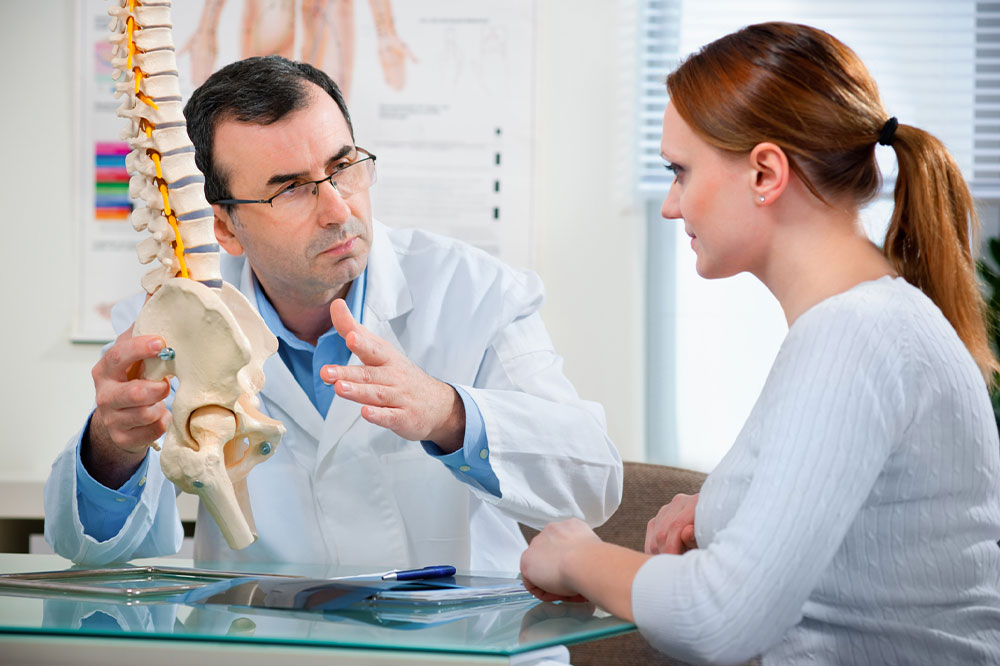
Ankylosing spondylitis – Signs, causes, complications, and more
Ankylosing spondylitis is a condition in which the bones of the spine, called the vertebrae, start to fuse due to inflammation. The swelling makes the spine rigid, leading to a noticeable hunched posture. It is also noted that if the ribs observe inflammation, breathing can be difficult. There are no treatments available to cure the illness, however, there are management options to reduce the severity of the symptoms and slow the progression of the disease.
Causes
The cause remains to be inconclusive, however, genetic factors seem to show a pattern that can be considered. Those with the gene HLA-B27 in their DNA are at high risk of developing this disease. However, it is also observed that only a few people with this gene are affected. However, the results are still under observation.
Signs and symptoms
Symptoms can develop in early adulthood with noticeable pain and stiffness in the lower back and the hips. These symptoms are experienced early in the morning after waking up and after long periods of inactivity. Neck pain and fatigue develop over time. One may experience pain or stiffness in:
- The lower back region
- The base of the spine and the pelvic region
- Hip and shoulder joints
- The region between the breastbone and the ribs
- Tendons and ligaments along the back of the heels or near the spine
Note that symptoms can be erratic, and the intensity can change over time. Sometimes they get worse, or improve or occur at random, irregular intervals. It is usually advised to see a doctor if one experiences pain in the lower back and hip region, especially at night. Sometimes, the pain improves with regular exercise but worsens during rest periods. These are crucial signs to see a doctor and get a detailed diagnosis of the condition.
Complications
Due to the illness and the body’s attempt to fight against it, new bones are formed in the vertebrae with gaps. Due to this, the sections of the vertebrae get fused together, making the spine inflexible. This can also affect the rib cage if the inflammation has spread to that area.
Other complications include:
- Heart-related problems
The aorta, the largest artery in the body, becomes inflamed and distorts the shape of the aorta valve in the heart, leading to impaired heart function and causing a high risk of heart disease. - Eye inflammation
The inflammation in the eye can cause pain and also develop sensitivity to light, causing blurry vision. Therefore, it is advised to see a doctor immediately to prevent any further damage. - Compression fractures
During the early stages of the disease, the bones can become weak, leading to breakage and crumbling. This causes the risk of developing a stupor posture with time. The vertebrae fracture can damage the nerves passing through the spine.
Treatment methods
As mentioned earlier, there are no definitive treatment options to cure the disease permanently, there are ways to manage the symptoms. Some doctors suggest anti-inflammatory options that help relieve the pain and stiffness in the body. However, it is important to speak to the doctor about any possible side effects of any treatment plans. Some anti-inflammatory methods can lead to gastrointestinal bleeding as well. Another treatment method includes using a tumor necrosis factor blocker or interleukin-17 inhibitor, an intravenous method administered under the skin.
Physical therapy is a significant treatment plan that focuses on relieving pain and improving strength and flexibility. This therapy includes exercises focusing on a range of motion, stretches, and strength training for the back and abdominal muscles. Therapy is also given to fix sleeping posture as well as walking positions.
Surgery is a last resort and is usually not so common for those dealing with ankylosing spondylitis. It is only necessary if the bone health is extremely damaged that no other treatment options can work. This surgery requires hip replacement.
Other management tips
Some other management tips include lifestyle adjustments like staying active and exercising regularly. This will help strengthen and maintain the flexibility of the bones and body. It is also advised to focus on a good posture, especially while sitting or standing for long working hours.
Besides this, it is also important to have a good support system at home where it is safe to share and emote feelings that may arise due to the limitations in the lifestyle due to the disease. Joining a support group is recommended as it provides a connection with those dealing with similar struggles. Seek professional help if there are any continued patterns of negative thoughts.




